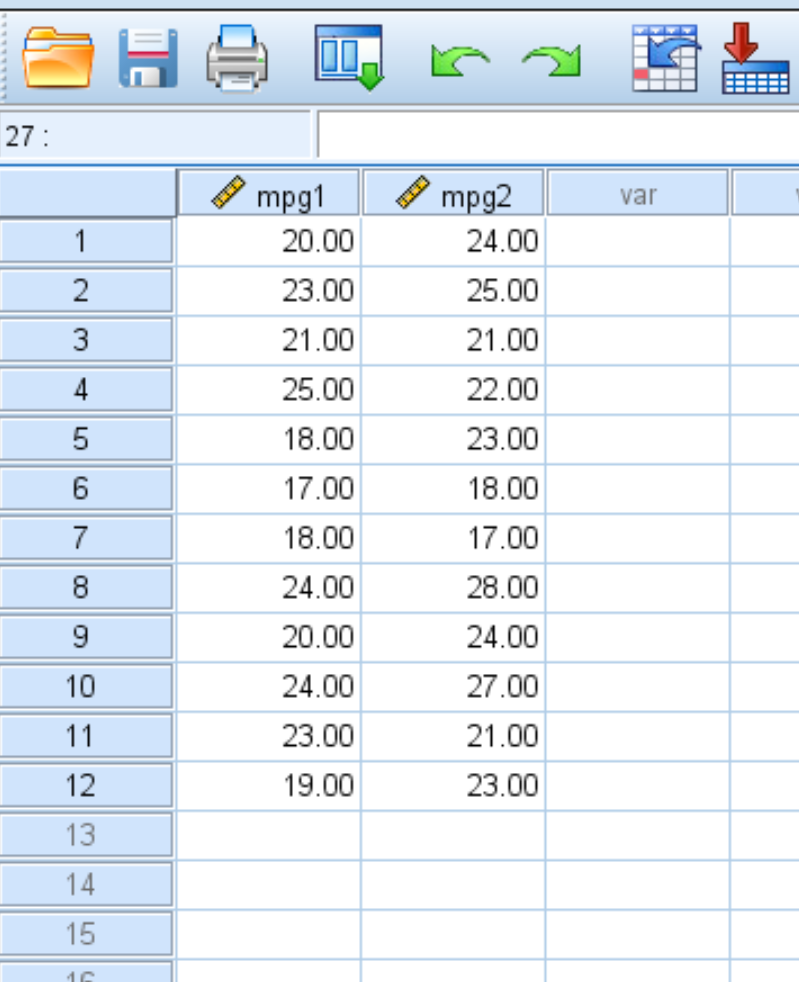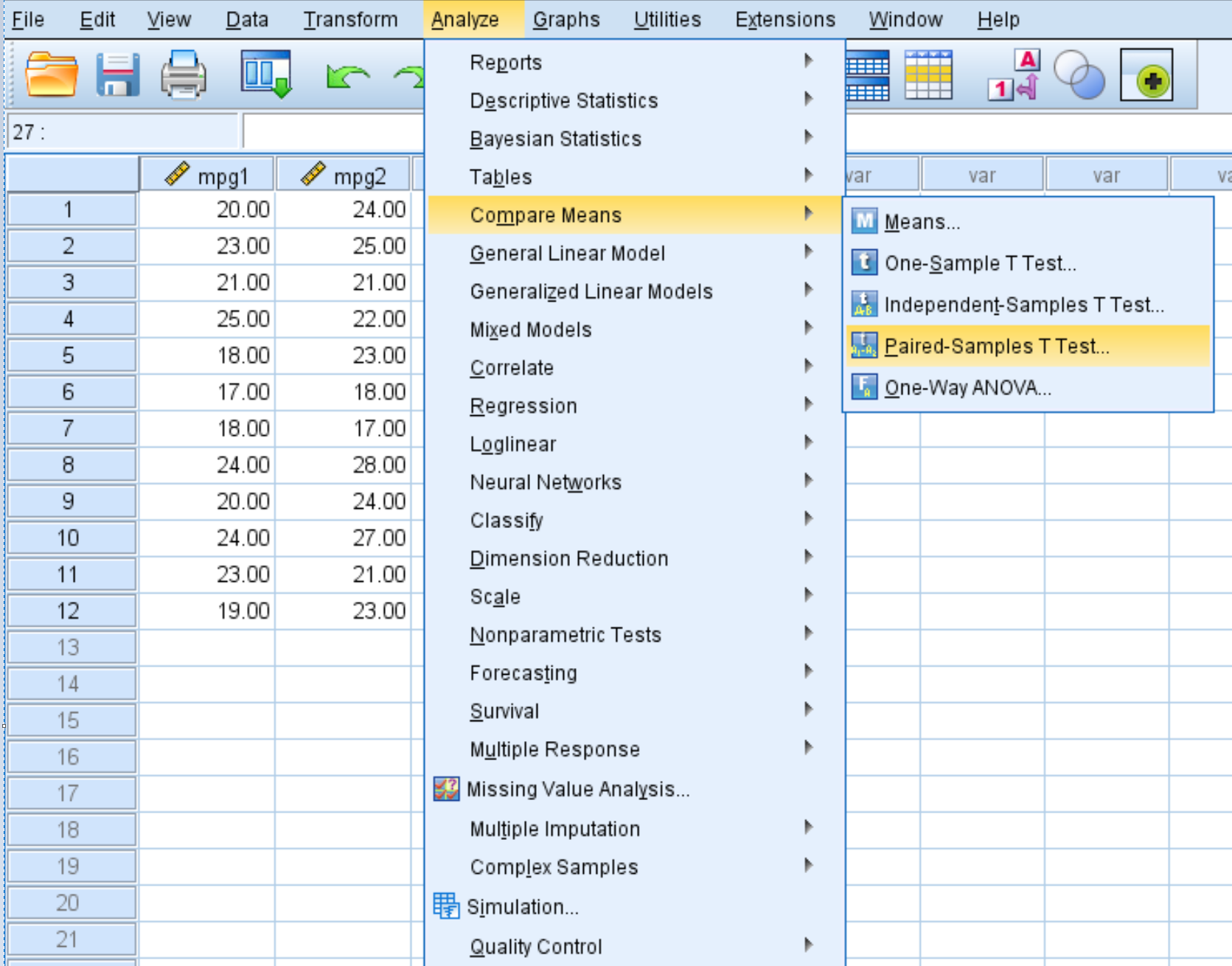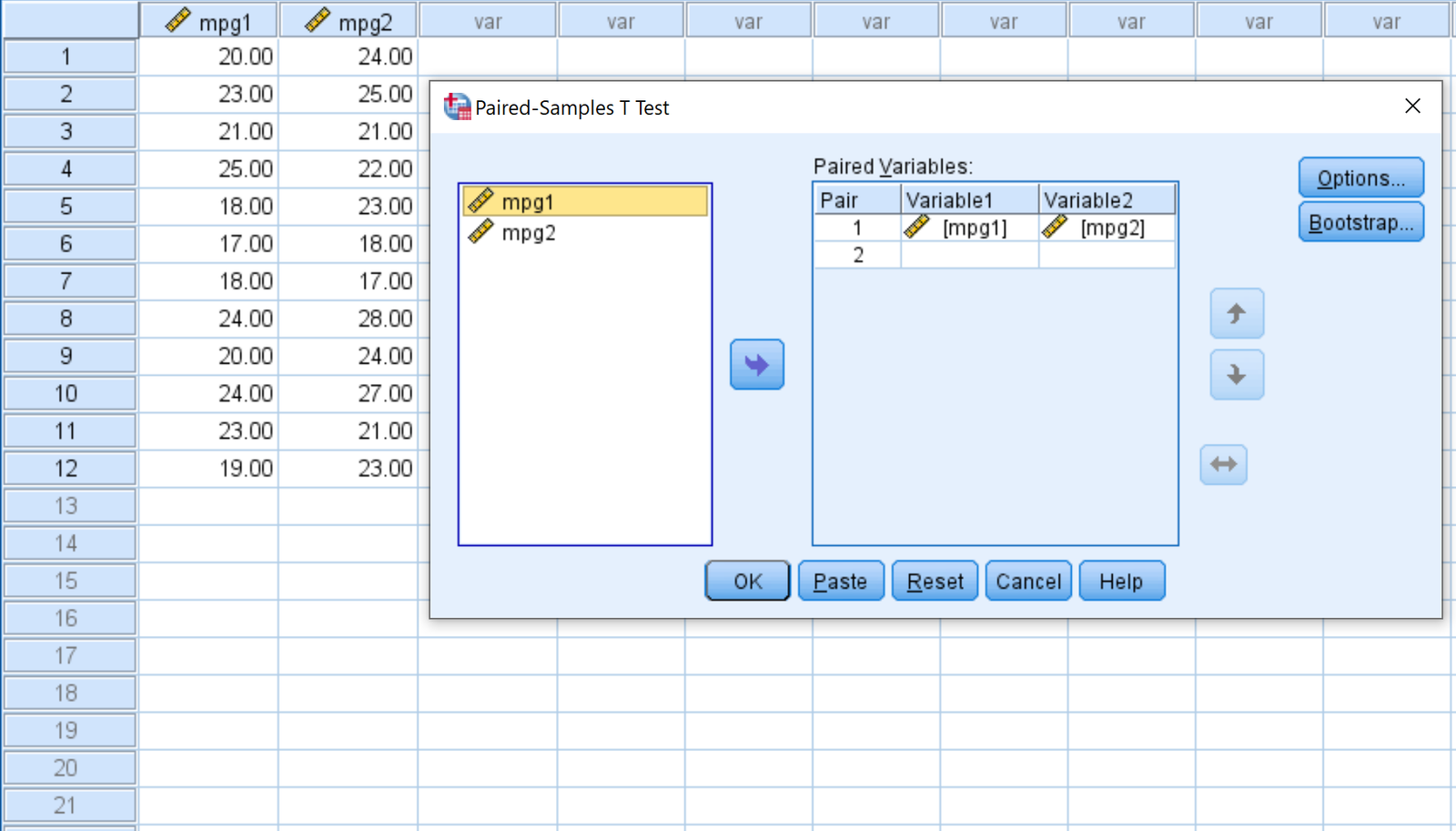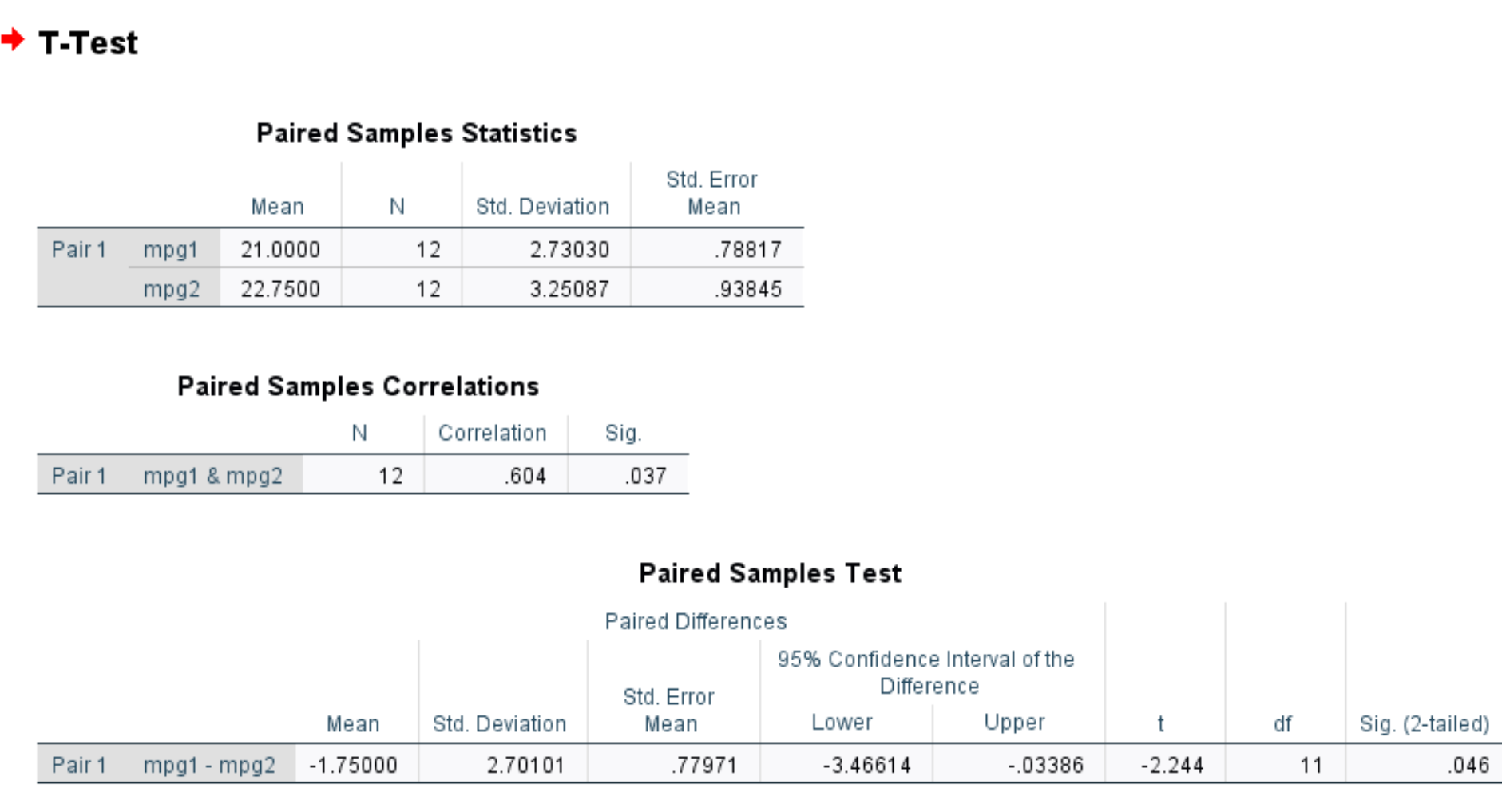A paired samples t-test is used to compare the means of two samples when each observation in one sample can be paired with an observation in the other sample.
This tutorial explains how to conduct a paired samples t-test in SPSS.
Example: Paired samples t-test in SPSS
Researchers want to know if a new fuel treatment leads to a change in the average mpg of a certain car. To test this, they conduct an experiment in which they measure the mpg of 12 cars with and without the fuel treatment.
Since each car receives the treatment, we can conduct a paired t-test in which each car is paired with itself to determine if there is a difference in average mpg with and without the fuel treatment, using the following null and alternative hypotheses:
- H0: μ1 = μ2 (average mpg between the two populations is equal)
- H1: μ1 ≠ μ2 (average mpg between the two populations is not equal)
The following screenshot shows the mpg for each car with (mpg1) and without (mpg2) fuel treatment:

Perform the following steps to conduct a paired t-test:
Step 1: Choose the Paired-Samples T Test option.
Click the Analyze tab, then Compare Means, then Paired-Samples T Test:

Step 2: Fill in the necessary values to perform the test.
Drag mpg1 into the box under Variable1 and drag mpg2 into the box under Variable2. Then click OK.

Step 3: Interpret the results.
Once you click OK, the results of the paired sample t-test will be displayed:

The first table displays the following summary statistics for both groups:
- N: The sample size of each group
- Mean: The mean mpg of cars in each group
- Std. Deviation: The standard deviation of the mpg of cars in each group
- Std. Error Mean: The standard error of the mean mpg, calculated as s/√n
The last table shows the results of the paired samples t-test:
- t: The test statistic, found to be -2.244
- df: The degrees of freedom, calculated as #pairs-1 = 12-1 = 11
- Sig. (2-tailed): The two-sided p-value that corresponds to a t value of -2.244 with df=11
Since the p-value of the test (.046) is less than 0.05, we reject the null hypothesis. We have sufficient evidence to say that the true mean mpg is different between cars that receive treatment and cars that don’t.
Step 4: Report the results.
Lastly, we will report the results of our paired samples t-test. Here is an example of how to do so:
A paired t-test was conducted on 12 cars to determine if a new fuel treatment lead to a difference in mean miles per gallon.
Results showed that the mean mpg was statistically significantly different between the two groups (t = -2.244 w/ df=11, p = .046) at a significance level of 0.05.
A 95% confidence interval for the true difference in population means resulted in the interval of (-3.466, -.034).